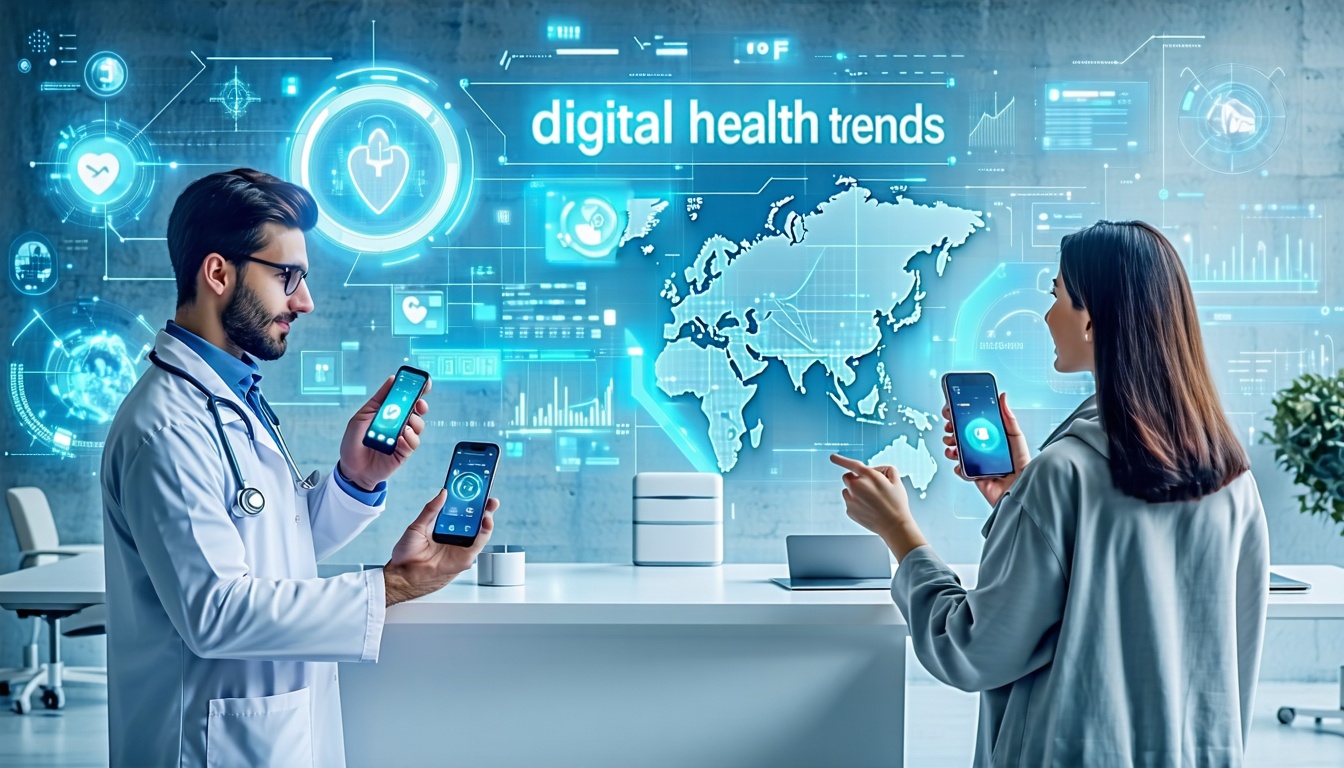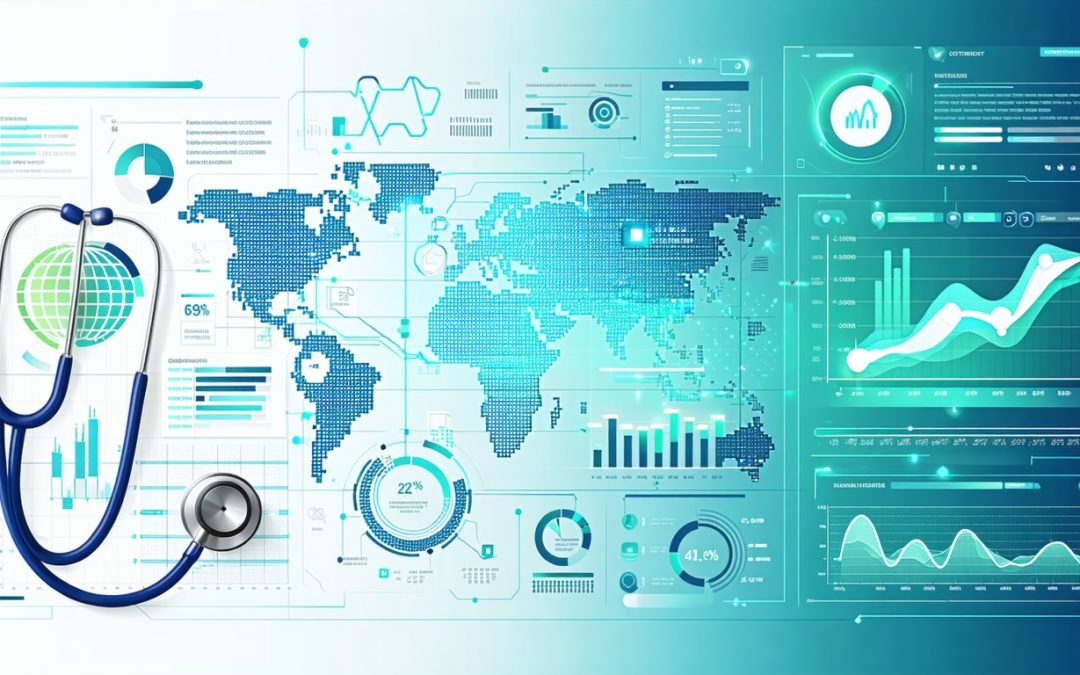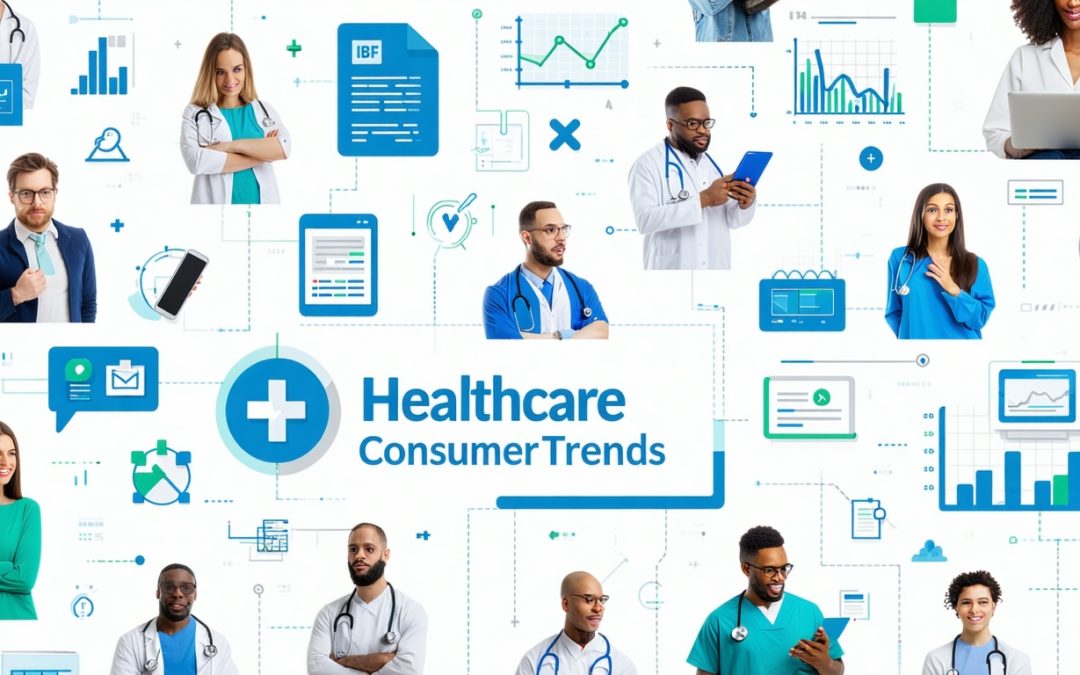The Evolution of Healthcare
The healthcare landscape has undergone significant changes over the years, transitioning from traditional methods to embracing digital health trends. This evolution has transformed how care is delivered, making it more accessible and efficient.
Traditional Healthcare vs. Digital Health Trends
Traditional healthcare typically involves in-person visits to medical facilities, where patients receive diagnoses and treatments from healthcare professionals. This model often requires patients to take time off work, travel long distances, and wait for appointments.
In contrast, digital health trends leverage technology to enhance patient care. These trends include telemedicine, wearable devices, and health monitoring applications. The following table highlights key differences between traditional healthcare and digital health trends:
| Aspect | Traditional Healthcare | Digital Health Trends |
|---|---|---|
| Accessibility | Limited by location | Available anytime, anywhere |
| Appointment Scheduling | Often requires in-person visits | Can be done online |
| Patient Monitoring | In-person follow-ups | Remote monitoring via devices |
| Communication | Face-to-face interactions | Virtual consultations and messaging |
Importance of Embracing Digital Health Trends
Embracing digital health trends is crucial for improving healthcare delivery. These trends offer numerous benefits, including increased access to care, enhanced patient engagement, and improved health outcomes.
Young professionals considering private healthcare can particularly benefit from these advancements. Digital health tools can provide personalized treatment plans and facilitate better communication with healthcare providers. For more insights into the evolving landscape, explore our articles on healthcare industry trends and healthcare technology trends.
As the healthcare sector continues to evolve, staying informed about these trends is essential for making educated decisions regarding personal health and wellness. Understanding the impact of digital health trends can empower individuals to take control of their healthcare journey.
Impact of Digital Health Trends
Digital health trends are reshaping the landscape of healthcare, providing innovative solutions that enhance patient care and streamline healthcare delivery. This section explores three significant trends: telemedicine and virtual consultations, wearable health technology, and health apps and monitoring tools.
Telemedicine and Virtual Consultations
Telemedicine has revolutionized the way patients access healthcare services. It allows individuals to consult with healthcare professionals remotely, eliminating the need for in-person visits. This trend has gained traction, especially during times when physical distancing is necessary.
| Benefits of Telemedicine | Statistics |
|---|---|
| Increased access to healthcare | 70% of patients prefer virtual visits for non-emergency issues |
| Reduced travel time and costs | 60% of patients report saving time with telehealth |
| Enhanced convenience | 80% of patients appreciate the flexibility of scheduling |
Telemedicine not only improves access to care but also allows for timely interventions, which can lead to better health outcomes. For more insights on how telemedicine is changing the healthcare landscape, refer to our article on healthcare delivery trends.
Wearable Health Technology
Wearable health technology has become increasingly popular among young professionals. Devices such as fitness trackers and smartwatches monitor various health metrics, including heart rate, sleep patterns, and physical activity levels. This technology empowers individuals to take charge of their health by providing real-time data.
| Common Wearable Devices | Features |
|---|---|
| Fitness Trackers | Step counting, heart rate monitoring, calorie tracking |
| Smartwatches | Notifications, health monitoring, GPS tracking |
| Health Monitors | Blood pressure tracking, ECG monitoring |
The integration of wearable technology into daily life encourages healthier habits and proactive health management. For more information on the latest trends in wearable technology, check out our article on healthcare wearables trends.
Health Apps and Monitoring Tools
Health apps and monitoring tools are essential components of the digital health landscape. These applications provide users with resources to track their health, manage chronic conditions, and access educational materials. Many apps also offer features for medication reminders and appointment scheduling.
| Popular Health App Features | Benefits |
|---|---|
| Symptom tracking | Helps users identify patterns and triggers |
| Medication management | Reduces the risk of missed doses |
| Health education | Increases awareness and knowledge about health issues |
The rise of health apps has made it easier for individuals to engage with their health and wellness actively. For a deeper dive into the impact of health apps, explore our article on healthcare technology trends.
Digital health trends are transforming the way healthcare is delivered and experienced. By embracing these innovations, young professionals can enhance their healthcare journey and make informed decisions about their health.
Enhancing Patient Care
Digital health trends are significantly transforming patient care, making it more accessible, personalized, and manageable. This section explores how these advancements are reshaping the healthcare landscape.
Improved Access to Healthcare Services
Digital health technologies have revolutionized access to healthcare services. Patients can now connect with healthcare providers from the comfort of their homes, reducing the need for in-person visits. This is particularly beneficial for individuals living in remote areas or those with mobility challenges.
| Access Method | Description | Benefits |
|---|---|---|
| Telemedicine | Virtual consultations via video or phone | Convenient, time-saving, and reduces travel |
| Online Scheduling | Book appointments through apps or websites | Easy access to available time slots |
| E-Prescriptions | Digital prescriptions sent directly to pharmacies | Faster medication access and fewer errors |
Personalized Treatment Plans
The integration of digital health trends allows for the creation of personalized treatment plans tailored to individual patient needs. By utilizing data from wearable devices and health apps, healthcare providers can monitor patient progress and adjust treatments accordingly.
| Personalization Aspect | Description | Impact |
|---|---|---|
| Data-Driven Insights | Analyzing patient data for tailored care | Improved treatment effectiveness |
| Patient Preferences | Incorporating patient feedback into care plans | Enhanced patient satisfaction |
| Adaptive Treatments | Modifying plans based on real-time data | Increased adherence to treatment |
For more information on how personalized care is evolving, refer to our article on personalized healthcare trends.
Remote Monitoring and Management
Remote monitoring tools enable healthcare providers to track patient health metrics in real-time. This technology allows for proactive management of chronic conditions and timely interventions when necessary.
| Monitoring Tool | Functionality | Benefits |
|---|---|---|
| Wearable Devices | Track vital signs and activity levels | Continuous health monitoring |
| Health Apps | Log symptoms and medication adherence | Empower patients in their care |
| Telehealth Platforms | Facilitate ongoing communication with providers | Immediate support and guidance |
These advancements in remote monitoring are crucial for enhancing patient care and ensuring that individuals receive the support they need. For further insights into the impact of technology on healthcare, explore our article on healthcare technology trends.
Challenges and Considerations
As digital health trends continue to reshape the healthcare landscape, several challenges and considerations must be addressed to ensure effective implementation and utilization. These include data privacy and security, integration with existing healthcare systems, and the digital divide and accessibility.
Data Privacy and Security
With the rise of digital health technologies, protecting patient data has become a paramount concern. Healthcare providers must ensure that sensitive information is safeguarded against breaches and unauthorized access. The implementation of robust cybersecurity measures is essential to maintain patient trust and comply with regulations.
| Data Privacy Concerns | Description |
|---|---|
| Data Breaches | Unauthorized access to patient information can lead to identity theft and fraud. |
| Compliance Issues | Healthcare organizations must adhere to regulations such as HIPAA to protect patient data. |
| Patient Trust | Maintaining confidentiality is crucial for fostering trust between patients and providers. |
Integration with Existing Healthcare Systems
Integrating new digital health solutions with existing healthcare systems can be complex. Many healthcare providers face challenges in ensuring that new technologies work seamlessly with legacy systems. This integration is vital for creating a cohesive healthcare experience and improving patient outcomes.
| Integration Challenges | Description |
|---|---|
| Compatibility Issues | New technologies may not be compatible with older systems, leading to data silos. |
| Training Requirements | Staff may require training to effectively use new digital tools. |
| Workflow Disruptions | Implementing new systems can temporarily disrupt established workflows. |
Digital Divide and Accessibility
The digital divide refers to the gap between those who have access to digital technologies and those who do not. This divide can create disparities in healthcare access and outcomes. Ensuring that all individuals, regardless of socioeconomic status, have access to digital health resources is essential for equitable healthcare delivery.
| Accessibility Issues | Description |
|---|---|
| Socioeconomic Barriers | Individuals from lower-income backgrounds may lack access to necessary technology. |
| Geographic Limitations | Rural areas may have limited internet connectivity, hindering access to digital health services. |
| Health Literacy | Patients may struggle to navigate digital health tools due to varying levels of health literacy. |
Addressing these challenges is crucial for the successful adoption of digital health trends. By focusing on data privacy, system integration, and accessibility, healthcare providers can enhance the overall effectiveness of digital health initiatives. For more insights into the evolving landscape, explore our articles on healthcare industry trends and healthcare technology trends.
Future of Digital Health Trends
The future of healthcare is increasingly intertwined with digital health trends. As technology continues to evolve, several key areas are expected to shape the landscape of private healthcare. This section explores the role of artificial intelligence, predictive analytics, and advancements in remote surgery technologies.
Artificial Intelligence in Healthcare
Artificial intelligence (AI) is revolutionizing the healthcare sector by enhancing diagnostic accuracy and streamlining administrative processes. AI algorithms can analyze vast amounts of data, helping healthcare professionals make informed decisions quickly.
| Application | Benefits |
|---|---|
| Diagnostic Tools | Improved accuracy in disease detection |
| Administrative Tasks | Reduced paperwork and streamlined operations |
| Personalized Medicine | Tailored treatment plans based on patient data |
AI’s integration into healthcare can lead to more efficient patient care and better outcomes. For more insights on how technology is shaping healthcare, refer to our article on healthcare technology trends.
Predictive Analytics for Preventive Care
Predictive analytics utilizes data analysis to forecast health trends and outcomes. By examining historical data, healthcare providers can identify at-risk patients and implement preventive measures before health issues arise.
| Predictive Analytics Use Cases | Impact |
|---|---|
| Chronic Disease Management | Early intervention reduces hospitalizations |
| Patient Risk Assessment | Targeted care for high-risk individuals |
| Resource Allocation | Efficient use of healthcare resources |
This proactive approach not only improves patient outcomes but also reduces overall healthcare costs. For further exploration of emerging trends, check out our article on emerging trends in healthcare industry.
Advancements in Remote Surgery Technologies
Remote surgery technologies are transforming surgical procedures by allowing surgeons to operate on patients from different locations. This innovation is made possible through robotic systems and high-speed internet connectivity.
| Technology | Advantages |
|---|---|
| Robotic Surgery | Precision and reduced recovery time |
| Tele-surgery | Access to specialized surgeons regardless of location |
| Enhanced Training | Simulation-based training for surgeons |
These advancements can significantly improve access to surgical care, especially in underserved areas. For more information on healthcare delivery innovations, visit our article on healthcare delivery trends.
The integration of these digital health trends is set to redefine the future of private healthcare, making it more efficient, accessible, and patient-centered.












0 Comments